Discover 20 hidden attractions, cool sights, and unusual things to do in Valladolid (Spain). Don't miss out on these must-see attractions: Museo Nacional de Escultura, Colegio de San Gregorio, and Casa de Cervantes. Also, be sure to include Valladolid Cathedral in your itinerary.
Below, you can find the list of the most amazing places you should visit in Valladolid (Castile and León).
Table of Contents
Museo Nacional de Escultura
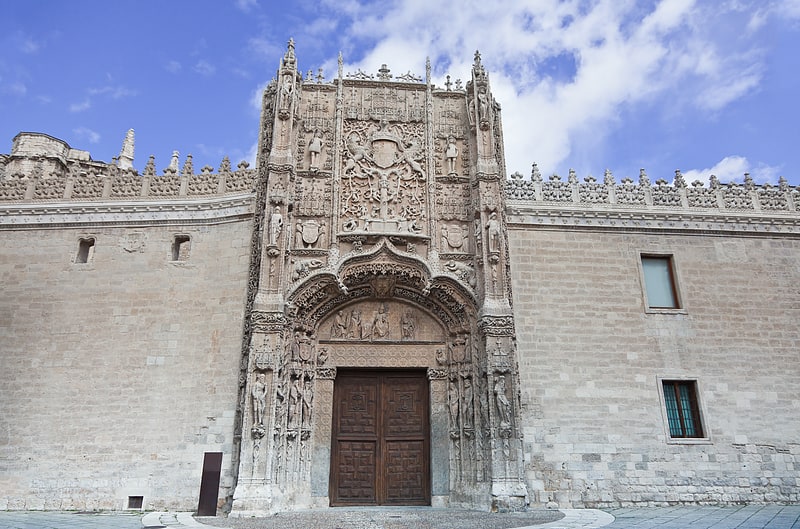
Museum. The Museo Nacional de San Gregorio is a museum in Valladolid, Spain, belonging to the Spanish Ministry of Culture. The museum has an extensive collection sculptural ranging from the Middle Ages to the 19th century from Region of Castile's churches that, at 19th-20th c. these were confiscated, and other particular donations, deposits or acquisitions of the state.
The museum was founded as the Provincial Museum of Fine Arts on 4 October 1842. It had its first headquarters at the Palacio de Santa Cruz. On 29 April 1933 it was moved to the Colegio de San Gregorio. Other current seats are in the 16th-century Palacio de Villena and Palacio del Conde de Gondomar
The museum houses works from the 13th to 19th centuries, executed mostly in the Central Spain, and also in other regions historically connected to Spain. Artworks include, among the others, a Raising of the Cross by Francisco del Rincon, I Thirst, and The Way of Calvary Gregorio Fernández, Adoration of the Magi by Alonso Berruguete, Lamentation of Christ by Juan de Juni, Penitent Magdalene by Pedro de Mena or the Holy Sepulchre or passage of the Sleepers Alonso de Rozas.
During the Holy Week in Valladolid the museum gives 104 images to the processions for the brotherhoods.[1]
Address: Calle Cadenas de San Gregorio, 1, 47011 Valladolid (Distrito 9)
Colegio de San Gregorio
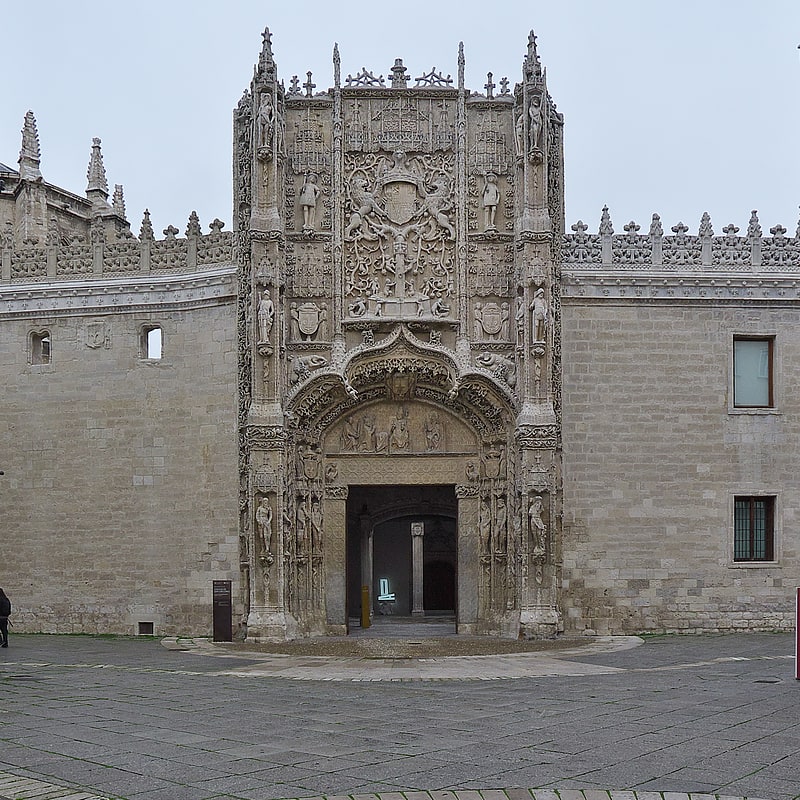
Museum in Valladolid, Spain. The Colegio de San Gregorio is an Isabelline style building located in the city of Valladolid, in Castile and León, Spain, it was formerly a college and now is housing the Museo Nacional de Escultura museum. This building is one of the best examples of the architectural style known as Isabelline, which is the characteristic architectural style of the Crown of Castile region during the Catholic Monarchs' reign.
Among other sections highlights its courtyard and its facade for its refined decoration, elegant proportions and the number of symbologies. It was founded as a teaching institution. Aimed at College of Theology for Dominican friars, it has acquired a doctrinal authority and acted as a spiritual and political hotbed in the Central region of Spain's Renaissance and Baroque periods.[2]
Address: Calle Cadenas de San Gregorio, 1, 47011 Valladolid (Distrito 9)
Casa de Cervantes
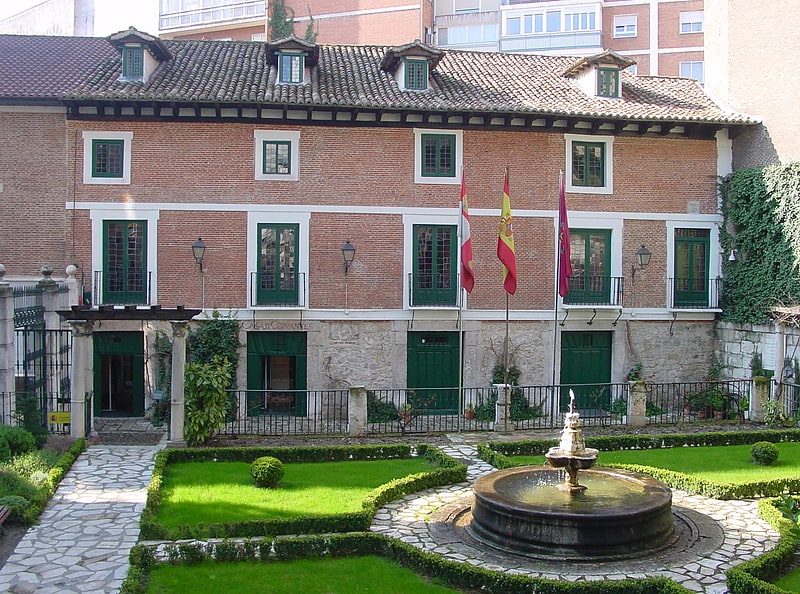
Museum in Valladolid, Spain. The Casa de Cervantes is a museum located in the city of Valladolid, Spain. The building was the home of the Spanish author Miguel de Cervantes. It is not to be confused with other houses associated with Cervantes, the birthplace in Alcala de Henares and the museum in Esquivias.[3]
Address: Calle Rastro, 6, 47001 Valladolid
Valladolid Cathedral

Also known as: Catedral de Nuestra Señora de la Asunción de Valladolid
16th-century Catholic cathedral and museum. The Cathedral of Our Lady of the Holy Assumption, better known as Valladolid Cathedral, is a Roman Catholic church in Valladolid, Spain. The main layout was designed by Juan de Herrera in a Renaissance-style.
The original design for this cathedral would have created a church which would have been the largest cathedral in Europe. Initially planned as the cathedral for the capital city of Spain, ultimately only 40-45% of the intended project was completed, due to lack of resources after the court moved towards Madrid, and the expenses caused by the difficult foundations of the building, which was located in an area with a large gap in the field.[4]
Address: Calle Arribas 1, 47002 Valladolid
Monument to Count Ansúrez
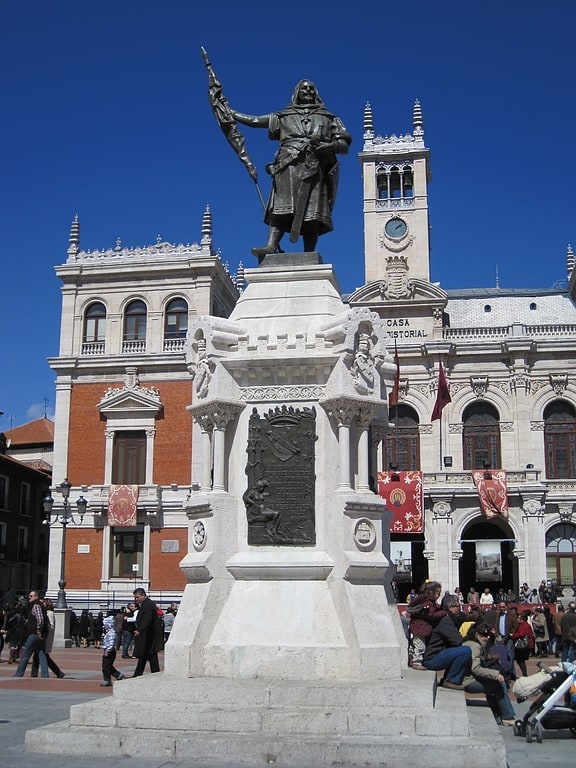
The Monument to Count Ansúrez is an instance of public art in Valladolid, Spain. Located at the Plaza Mayor, it consists of a bronze statue of Count Pedro Ansúrez, founder of the town of Valladolid in the 11th century, topping off a stone pedestal with additional sculptural elements.[5]
Museo de la Ciencia
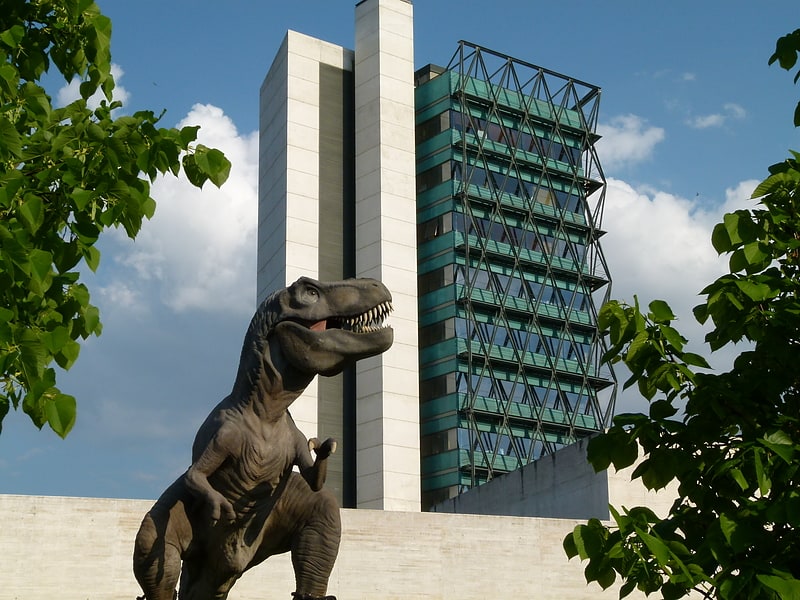
Museum in Valladolid, Spain. Valladolid Science Museum was opened in May 2003 as a museum and an iconic piece of architecture based on an old flour mill. Rafael Moneo and Enrique de Teresa used a lot of the old industrial complex to create this new Science Museum.[6]
Address: Av. de Salamanca, 59, 47014 Valladolid (Distrito 10)
San Benito el Real
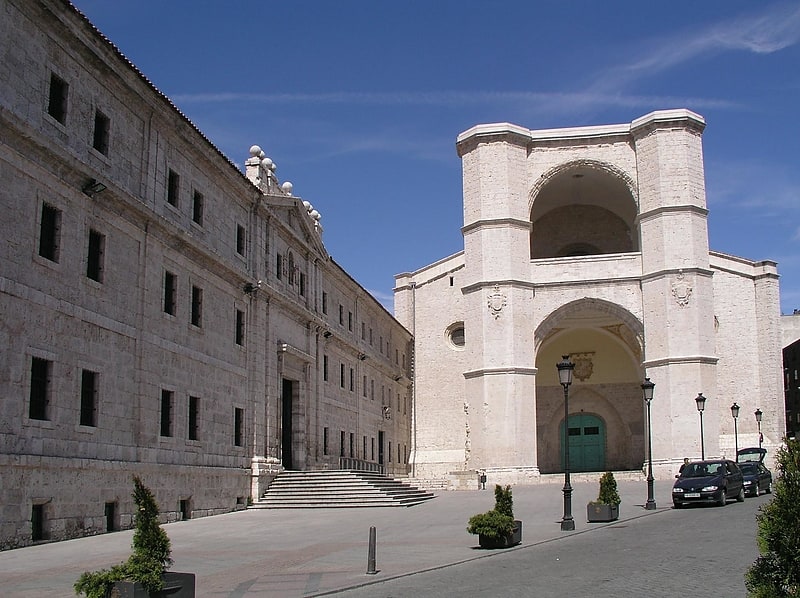
Catholic church in Valladolid, Spain. The Church of the Monastery of San Benito el Real is a parish church and former Benedictine monastery located in the city of Valladolid, Castile and León, Spain.[7]
Address: Calle San Benito 3., 47003 Valladolid (Distrito 9)
Plaza Mayor

Historical landmark in Valladolid, Spain. The Plaza Mayor is a central plaza in the city of Valladolid, Spain. It is located only a few blocks away from another famous plaza, the Plaza Zorrilla.[8]
Address: Plaza Mayor s/n, 47001 Valladolid
Teatro Calderón
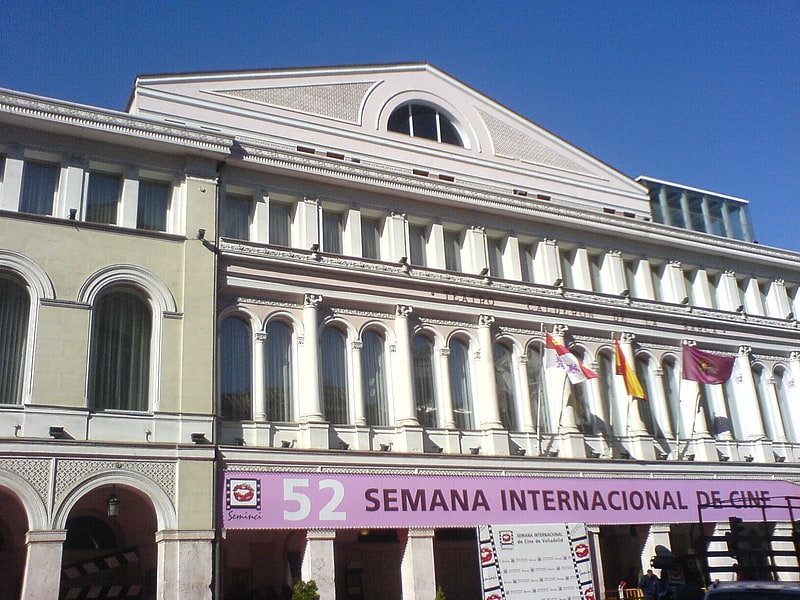
Theater in Valladolid, Spain. The Teatro Calderón de la Barca is a theater in Valladolid, Spain. It is named after the playwright Pedro Calderón de la Barca.
The site of the theater was occupied until the mid-nineteenth century by the palace of the Duke of Osuna, Admiral of Castile, which was demolished to make way for the theatre. Jerónimo de la Gándara was the architect. One of the largest theaters in Spain, the facade has an eclectic neo-classical style. The Calderón opened in 1864.
The interior has a horseshoe shape in the Italian style. The paint work, curtains and sets were created by the celebrated decorator Augusto Ferri. The Art Nouveau side lamps date from the early twentieth century. Other rooms were a coffee shop, a library decorated with many paintings, and a banquet room. The magnificent and lavishly decorated building became one of the main theaters in Spain when it opened.
Over the years it experienced ups and downs. Since 1973 the theater has been the permanent home of Seminci, the Semana Internacional de Cine de Valladolid, or Valladolid International Film Festival. In the 1990s a major renovation was undertaken by the architects Jaime Nadal and Sebastian Araujo, and on 9 April 1999 the theatre was reopened by Queen Sofía of Spain. Since then its stage has been used by several national theater companies, and by both national and international dance companies.[9]
Address: Calle Alonso Berruguete, 6, 47003 Valladolid
Palacio de Santa Cruz
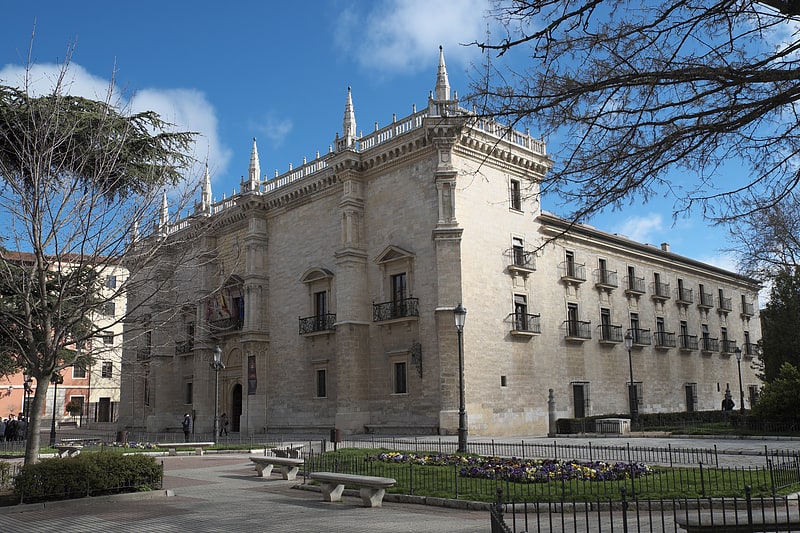
Palace in Valladolid, Spain. The Palacio de Santa Cruz is an Early-Renaissance palace in Valladolid, in Castile and León, Spain. Construction began in 1486 but in 1490 building came under the control of Lorenzo Vázquez de Segovia who finally completed it in 1491.
Founded by Cardinal Mendoza, the college is considered to be the earliest extant building of the Spanish Renaissance. Some observers believe that some of the classical details may have been added to the facade at a later date. One anomaly is the lack of full symmetry of the main facade. Nevertheless, details such as the main doorway are generally accepted as original to Vázquez's design. Confirmation of this impression is the similar doorway on the palace of the Dukes of Medinaceli built to the designs of the architect at Collogudo to the north east of Madrid. The dukes were a branch of the same influential Mendoza family as the cardinal.[10]
Address: Plaza Colegio de Santa Cruz 8, 47002 Valladolid
Estadio José Zorrilla
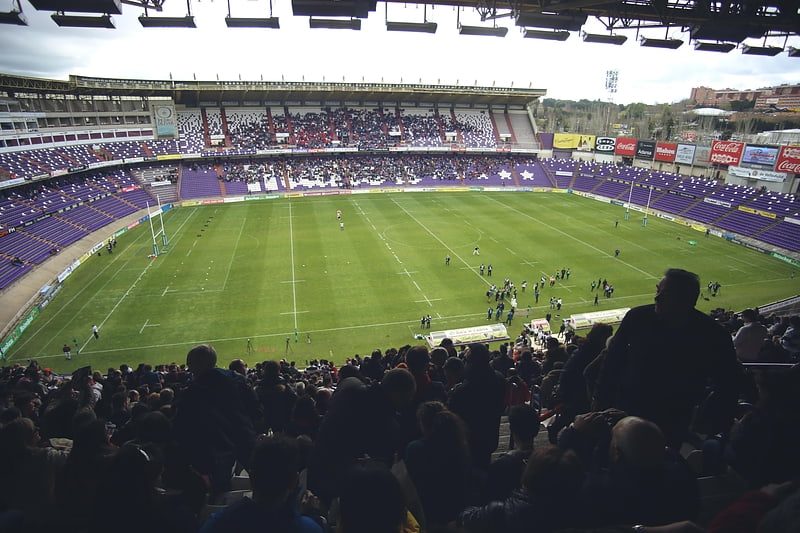
Stadium in Valladolid, Spain. Estadio José Zorrilla is a football stadium in Valladolid, Spain. The capacity of the stadium is 27,846 seats, making it the 22nd-largest stadium in Spain and the largest in Castile and León.
The stadium was built in 1982 and is named after poet José Zorrilla. Prior to this, they played in the old Estadio José Zorrilla.
The first match to be played at the stadium was a Spanish Liga match 20 February 1982 between Real Valladolid and Athletic Bilbao which ended in a 1–0 victory for Valladolid, the only goal being scored in the 84th minute by Jorge Alonso. The 1982 Copa del Rey Final was played at the stadium on 13 April, with Real Madrid defeating Sporting de Gijón 2–1.
During the 1982 FIFA World Cup, three Group D matches (Czechoslovakia-Kuwait, France-Kuwait and France-Czechoslovakia) were played at the Estadio Zorrilla.
Pop Superstar Michael Jackson performed a sold-out show on September 6, 1997 during his HIStory World Tour and concluded his European leg of the tour.
Plans are currently under way to expand the stadium to 40,000 spectators. The project is known as Valladolid Arena.
In 2016, the stadium hosted the Copa del Rey de Rugby final between SilverStorm El Salvador and VRAC Entrepinares. 26,500 spectators attended to the game beating the record of attendance to a rugby union match in Spain.[11]
Address: Avenida Mundial 82 s/n, 47014 Valladolid (Distrito 10)
Seat of the Cortes of Castile and León
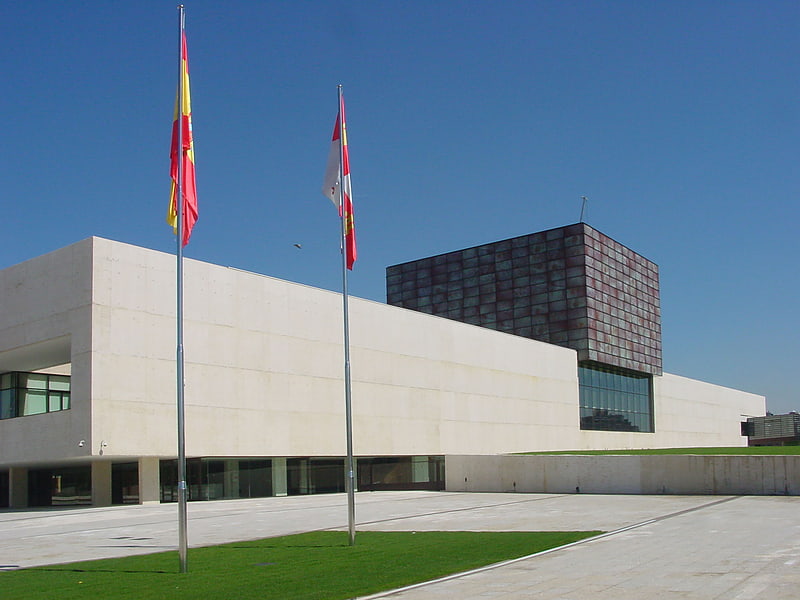
The Seat of the Cortes of Castile and León is a legislative building opened in 2007 for the Cortes of Castile and León, situated in the city of Valladolid.[12]
Illustrious Penitential Brotherhood of Our Lady of Anguish

Also known as: Ilustre Cofradía Penitencial de Nuestra Señora de las Angustias
The Illustrious Penitential Brotherhood of Our Lady of Anguish is a Catholic fraternity established in Valladolid, Castile and León, Spain in 1536.[13]
Address: Calle Angustias n 0 7, 47003 Valladolid
Royal Palace of Valladolid

Also known as: Palacio Real de Valladolid
Official residence in Valladolid, Spain. The Royal Palace of Valladolid was the official residence of the Kings of Spain during the period in which the Royal Court had its seat in Valladolid between 1601 and 1606, and a temporary residence of the Spanish Monarchs from Charles I to Isabella II, as well as of Napoleon during the War of the Independence. Currently is the headquarters of the 4th General Sub-inspection of the Army.[14]
Address: Plaza de San Pablo, Valladolid (Distrito 9)
Casa Museo de Colón
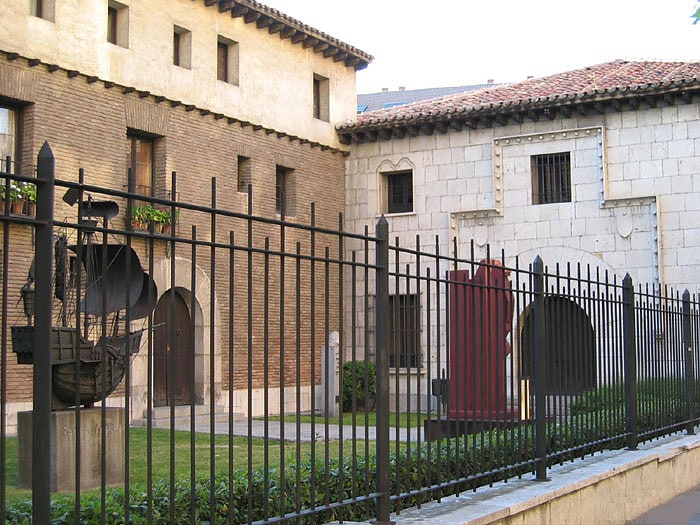
Museum in Valladolid, Spain. Christopher Columbus Museum is a museum in Valladolid in western Spain built in 1968. Outside is a statue of the Santa María.[15]
Address: C/ Colón, nº 1, 47005 Valladolid
Lope de Vega Theatre
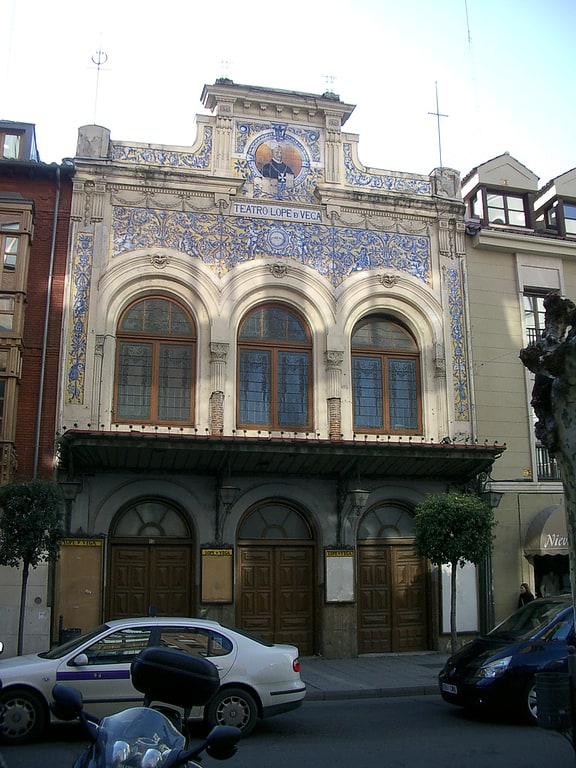
Also known as: Teatro Lope de Vega
Theatre in Valladolid, Spain. The Lope de Vega Theatre is a theatre in Valladolid, Spain, situated on María de Molina street. It was inaugurated in 1861, designed by the architect Jerónimo de la Gándara.
In the seventeenth century the site of the theatre was a patio equipped with a stage for putting on plays and covered boxes for the audience. The patio was covered in the eighteenth century, and the Plaza de la Comedia lasted until 1856, when it was proposed to replace the now-ruinous building with a new theatre. Jerónimo de Gándara was the architect.
The Teatro Lope de Vega was inaugurated on 8 December 1861. The facade, restored in 1920, is in the classical style. It has two levels, each with three arches, and a pediment that holds a medallion with the likeness of Lope de Vega sculpted by Ponciano Ponzano. More recently an iron and glass canopy was added. The theatre was renovated in 1960, reopening as a cinema and theatre, but closed on 30 April 2000.
The Caja Duero, a bank, bought the run-down theatre for seven million euros in April 2006. In March 2007 it was estimated that another seven million euros would be needed to rehabilitate the theatre. Given the high cost, there were delays in getting the project started. In August 2008 the president of the bank confirmed that they had received an offer to buy the theatre and convert it for use as a gaming room. In August 2008 the mayor of Valladollid, Francisco Javier León de la Riva, said he was confident that work would be started to undertake a major restoration for the listed building. The project was sponsored by the Caja Duero and had strong public support.[16]
Monastery of Nuestra Señora del Prado
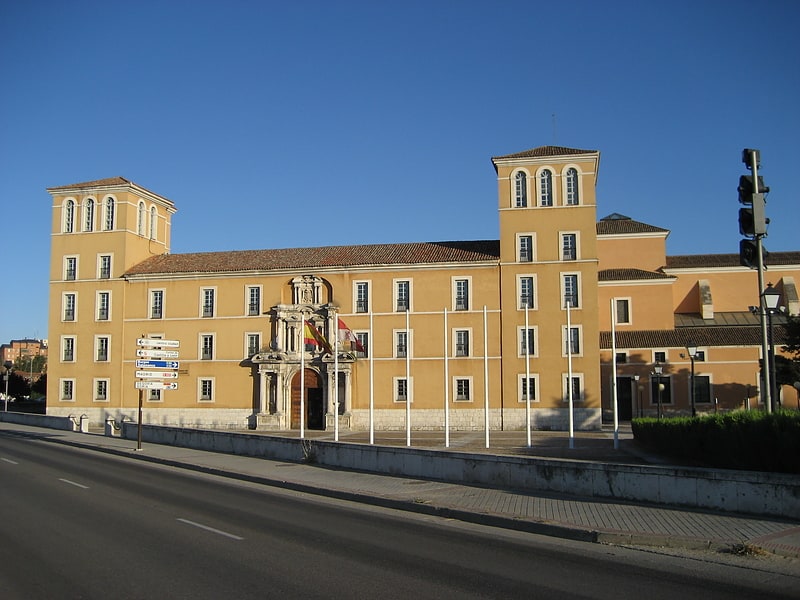
Also known as: Monasterio de Nuestra Señora de Prado
The Monastery of Nuestra Señora del Prado is a monastery located in Valladolid, Spain. It was declared Bien de Interés Cultural in 1877.[17]
Iglesia de San Pablo
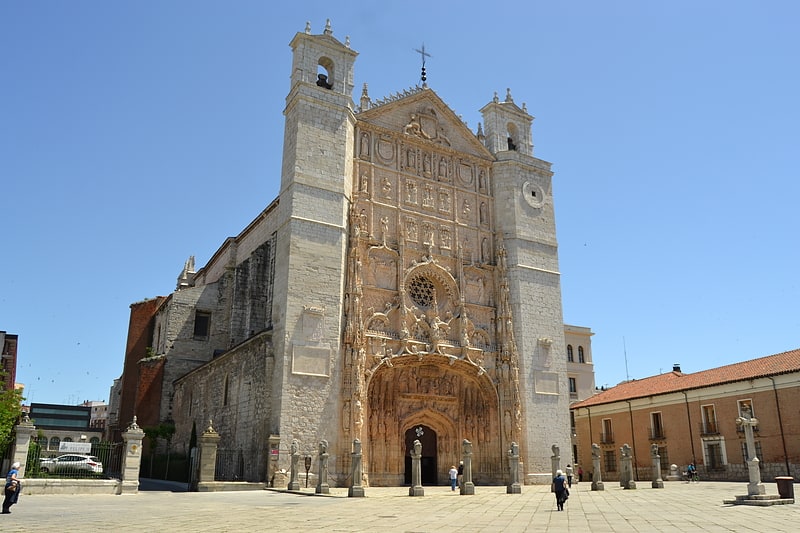
Gothic monastery with an ornate facade. The Iglesia conventual de San Pablo or San Pablo de Valladolid is a church and former convent, of Isabelline style, in the city of Valladolid, in Castile and León, Spain. The church was commissioned by Cardinal Juan de Torquemada between 1445 and 1468. It was subsequently extended and refurbished until 1616. Kings Philip II and Philip IV of Spain were baptized in the church, and it was visited by Napoleon. It is one of the buildings considered most emblematic of the city.[18]
Address: Plaza San Pablo 4, 47011 Valladolid (Distrito 9)
Palacio de Fabio Nelli

Museum in Valladolid, Spain. The Palacio de Fabio Nelli is, according to the critics and historians, the Renaissance building of the most important classical period of the city of Valladolid. According to the architect Antonio Bustamante García, "it's considered this palace the best exponent and work of first row inside the Classicism of the civil architecture of Valladolid". The art critics ensure that had much to do with the result of the work, the good relations and understanding between the sponsor, the banker Fabio Nelli, and the genius and mastery of the author Pedro of Mazuecos El Mozo.
Built in a period in which Valladolid became more decadent, its construction lasted some twenty years, succeeding periods of inactivity in the work and a change of architect due to the death of Juan de la Lastra, the original architect.
Decorated and finished following Italian classicist style, its facade, playground and stairs are the epitome of this type of architecture in Valladolid. After the death of the banker the Palacio had several uses, until in the 20th century it became headquarters of the Valladolid Museum, an institution destined to collect all the archaeological and artistic remains of the province.
The structure is in relatively good condition, awaiting an expansion of the space dedicated to the museum and a restoration of the frontage and the playground of the old palace.[19]
Casa-Museo de Zorrilla

Plaza Zorrilla is a central square in the city of Valladolid that is the starting point of one of the main arteries of the city: the Paseo Zorrilla. In addition, four of the main and most important streets of Valladolid converge in the square: Calle de Santiago, Calle Miguel Íscar, Acera de Recoletos and Calle de María de Molina. From the Plaza Zorrilla you can access the Campo Grande Park and in it are located the Cavalry Academy and the Casa Mantilla.
The square has an area of 6.410,9 m² and a length of 93,89 meters.
Address: Plaza de Zorrilla, Valladolid